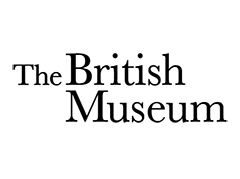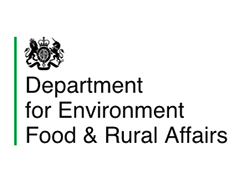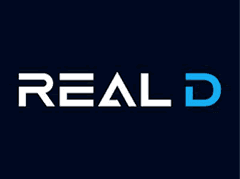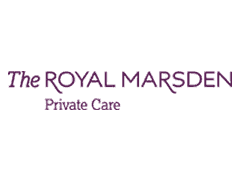Take a walk through the Buyer’s Journey with us. Find out what it is, how the different stages affect your content strategy and why it’s important to consider in your overall marketing strategy.
Buyer’s journey is one of the most fundamental parts of inbound marketing. It’s the research process or buying process every buyer goes through before making the final purchasing decision. It involves three stages:
- Awareness
- Consideration
- Decision
Businesses can use the buyer’s journey model to understand buyer’s problems, needs and their overall online behaviour at each stage of their journey. Through understanding your customer’s buying process, you can nurture them along the process by providing suitable content at each stage.
Let’s now have a closer look at the three stages of the buyer’s journey.
Awareness Stage
The awareness stage is the first step in a buyer’s journey. It’s when potential buyers are just noticing that they may have a problem and are seeking information to understand them better. It is very likely they will start looking for answers in google or other search engines and will click on content that is relevant and available to them.
At this stage, you need to address your buyer’s pain points. You will need to create relevant content that is compelling, problem-focused and educational. Avoid talking about your products too much and sounding too sales-y at this stage. The goal is to convince your potential buyers that you are knowledgeable about their problem and assure them that you can help solve it.
Let’s take an example of a middle-aged woman living in the midlands, who owns horses and hasn’t updated her yard in a few years. She may be a potential lead for an equestrian manufacturer who provides quality equestrian buildings. To get the customer thinking about their pain points – they might produce content that points out the deterioration of a yard over the years and the dangers it can produce to the horses and humans. Or maybe how often you should be treating your stables or even a blog about the happiness a horse receives from clean and tidy stable conditions. These all get her thinking – is my yard up to standards? Do I need an update?
One of the most common and useful awareness stage content you can create is a blog post. However, there are several other contents you can create, such as:
- Whitepapers
- Checklist
- Infographic
- Webinars
- Social Media Posts
Once you have helped them to identify and maybe describe their ‘problem’, they will be ready to move on to the consideration stage, ideally with you in mind.
Tip– As your potential buyers will using search engines like Google for information, you need to ensure that your content is easy to find. Having an exciting yet descriptive meta title and description with relevant keywords will help you get those clicks to your site.
Consideration Stage
When a customer is in the consideration stage, they have a clear image of their ‘problem’ and are actively researching ways to solve it. This is the most crucial stage of the buyer’s journey as this is when your buyers will start comparing, contrasting and filtering out different methods and approaches. However, they have not decided on a single solution yet; they are just figuring out what approach they should take to solve their problems. For instance, at this stage, someone who needs to build a shelter for their horses may be deciding between an American barn, a Stable, or maybe a prefabricated stable.
You will want to provide them with content that highlights and compares these different approaches and methods. Portray yourself as an industry expert and convince your buyers that you are well-experienced and know what you are talking about.
Some of the consideration stage content to consider are:
- Webinars
- Comparison Videos
- Podcasts
Decision Stage
At this point in the journey, your potential buyers have decided on their solution method. In our example above, the horse owner has decided a new American Barn meets her needs and now wants to decide what company should build it. They will start comparing and deciding between a list of brands, you want to make sure you are on this list and that you stand out from your competitors.
This stage is all about you presenting and pitching your products and services. You will want to let your buyers know why they should buy from you over all the other brands you are pitted against.
Provide content that will persuade and convince your buyers that your product or service is the best option. Your content offers must also highlight the credibility of your company and the products you offer. This can be in the form of free trials, live demos, case studies, and testimonials. From our horse owner example, the equestrian manufacturer will want to include pictures of past work and testimonials from clients, maybe even offer a walkthrough of the product.
Tip: This is when you get to start bragging about your products or services, so make sure the content offers include client reviews and testimonials. This will help you gain their trust and come across as a credible company.
Applying the Buyer’s Journey
Now that you have a good understanding of the three stages of the buyer’s journey; let’s explore the steps you need to take to implement them into your marketing strategy.
- Create your buyer’s persona. Identify their pain points and challenges, and carefully map out what they experience and how they behave when they discover them.
- Next, write down a list of questions your potential buyers will be asking at each stage of their journey. This will help you decide on what content/ information you’ll need to provide and at what stage.
- Lastly, create your content based on the questions your buyers will have at each stage of their journeys. Each of these pieces will need to be valuable and provide answers to questions they have in each stage of their journey, only then you will be able to guide them from one stage of their journey to the next and finally convert them into a buying customer.
Conclusion
The buyer’s journey is an essential part of an inbound marketing strategy. It helps you understand what kind of questions your potential buyers will be asking when looking to solve their problems so you can offer relevant content to attract them.
Creating tailored content for buyers at each stage will help you capture their attention on an early stage of their journey and help you guide them throughout the other stages and turn them into a valuable customer.
However, it is also important to note that not all buyers are always going to move through the buyer’s journey stages linearly. Buyers will skip and even revisit some stages several times, sometimes going backwards and even retreat. Therefore, it is essential to plan appropriately by ensuring that your content is useful and available at each stage. No matter what stage of the journey your potential buyers are at, you need to ensure that they find you with valuable and helpful information which will help them make decisions.
Over the years, our team here at ExtraDigital have been consistently utilising the buyer’s journey methodology to identify and implement suitable contents strategy for our clients. By understating buyer’s personas and their journey, we have been able to help create and deliver valuable content strategies for clients, ultimately resulting in high customer satisfaction and retention rate.
Learn about the Inbound Flywheel – the end goal of a successful buyers journey!
Now that you are aware of what buyer’s journey is and how important it is when creating an effective content marketing strategy, it is time you do the same for your own business. Need help? Our specialists at ExtraDigital have all the essential skills and experience to provide you with an effective marketing strategy which will help you generate right leads and nurture your existing customers.
Give us a call on +44 (0)1227 68 68 98 or fill out the form below and we will be in contact soon!










